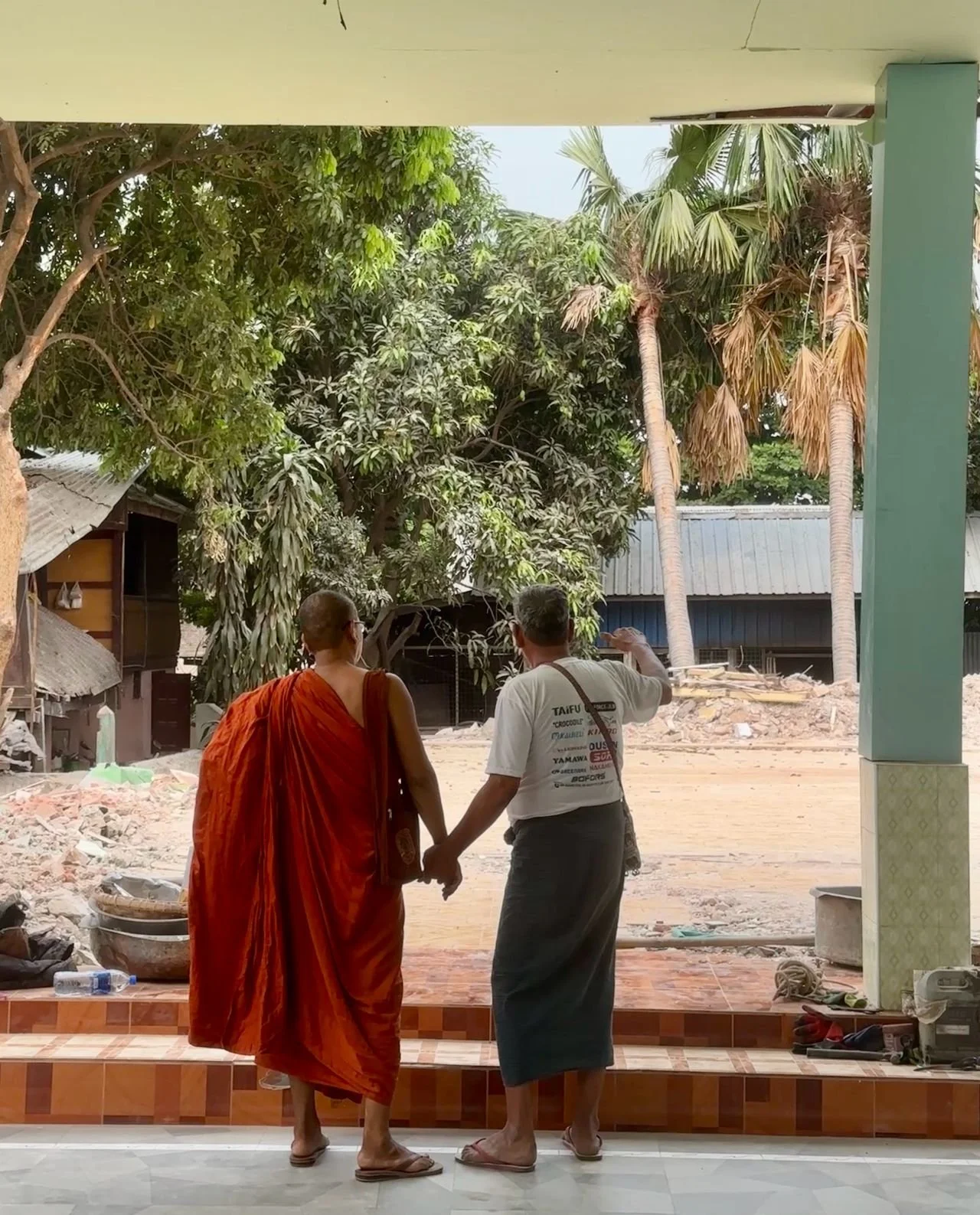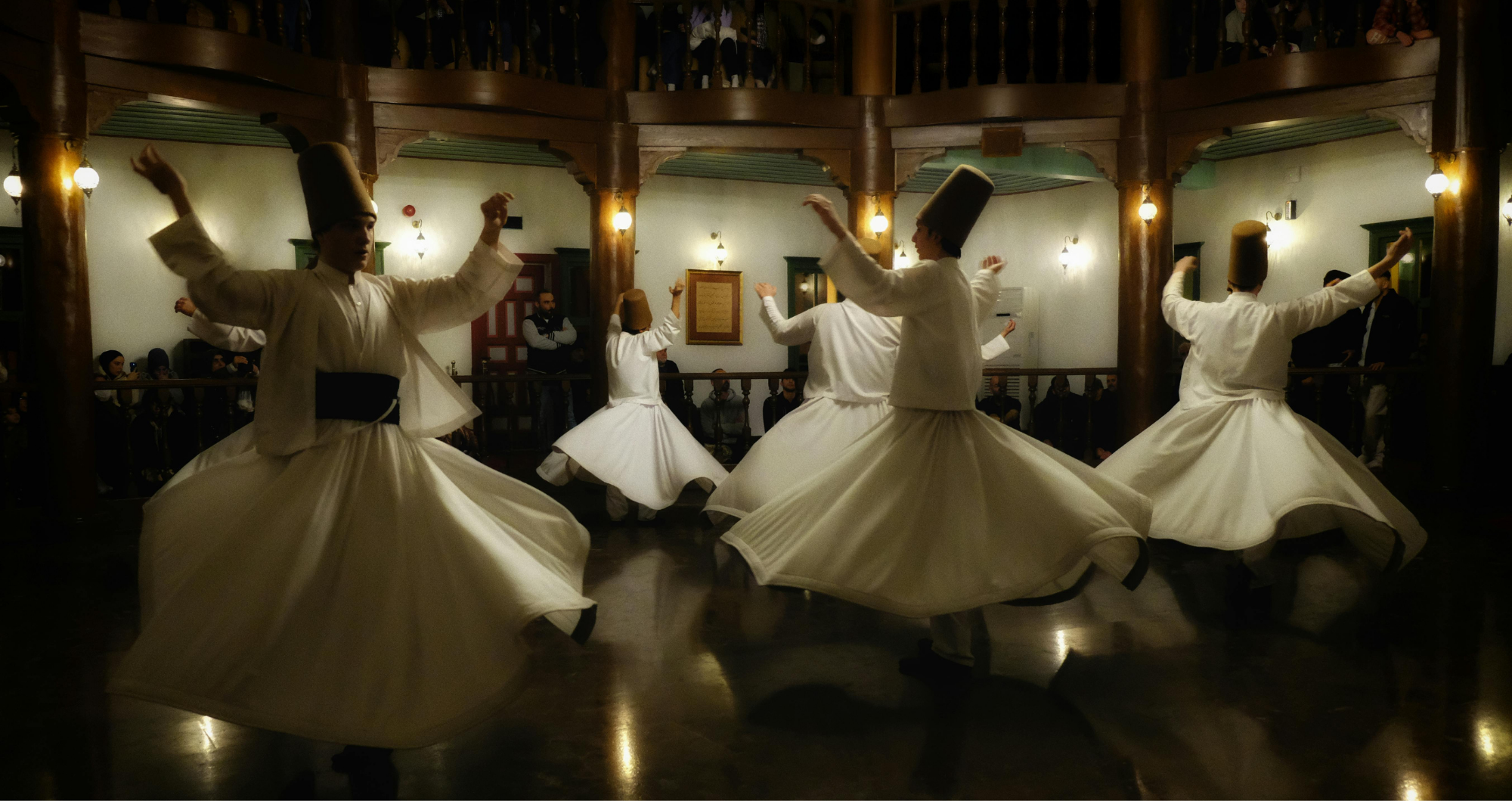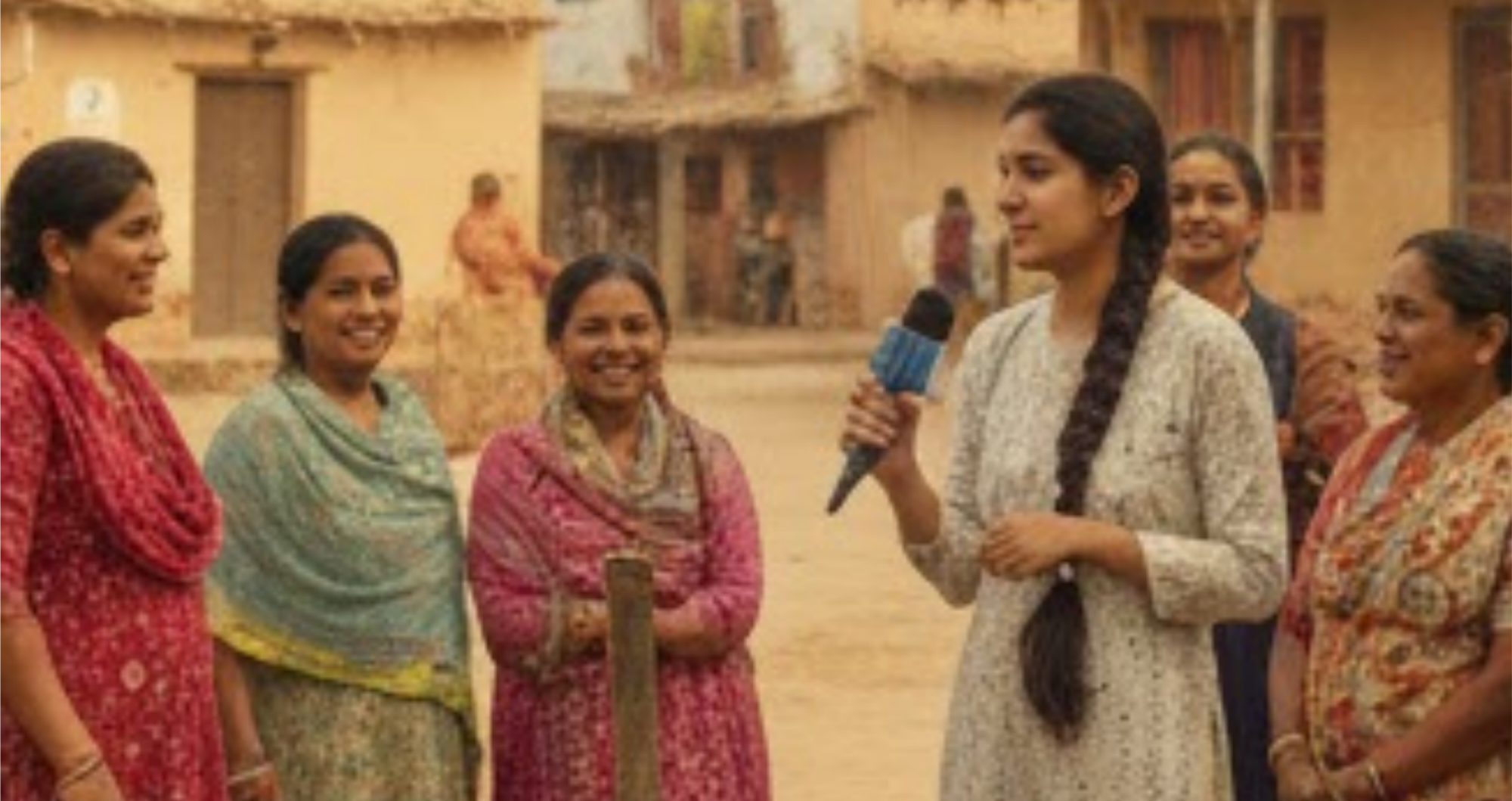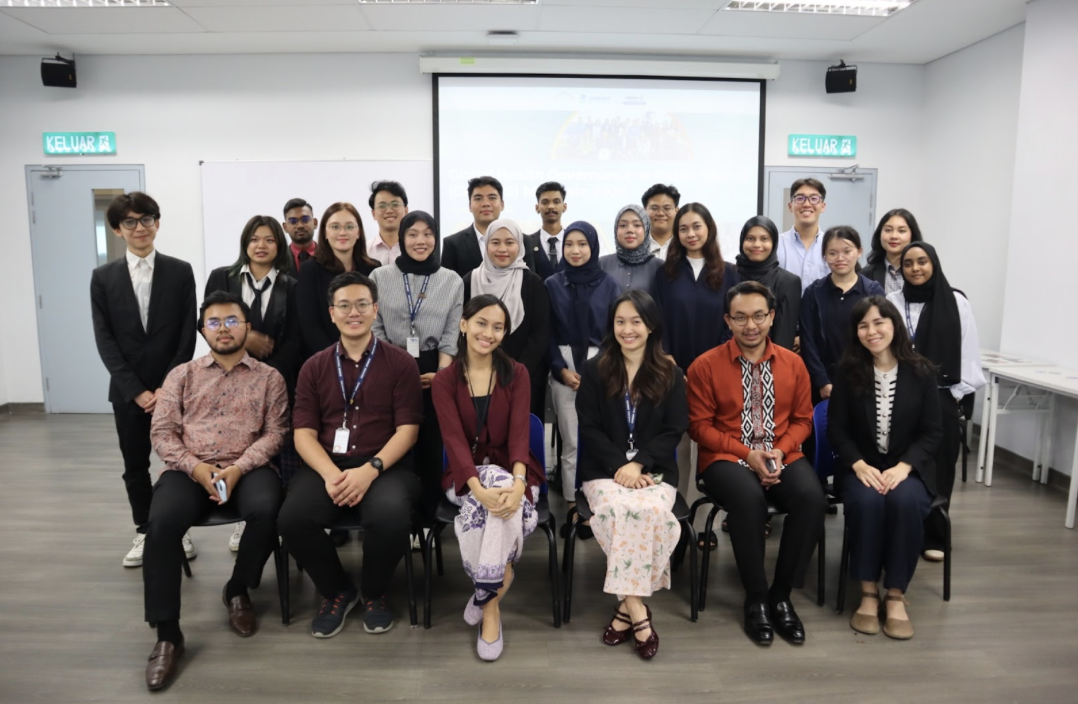Written By Jemilah Mahmood, Maisarah Faiesall, Nazia Ahmad, Zebo Khamraeva
Imagine a world where the very elements that sustain life—clean water, fertile land, and stable weather—can trigger a new generation of conflict. What if the end of global conflict hinges not on treaties or weapons, but on the health of our planet? In an age of planetary crises, peace must be reimagined as a living, breathing thing, where both people and the planet are healthy and thriving. A dried-up riverbed is not just an environmental disaster, but also a spark for conflict over scarce resources. A barren forest is not just a loss of trees, but a fracture in the bonds that hold communities together. Building a world governed by planetary health means blurring the artificial lines separating environmental protection, human security, and peace, revealing a shared mission rooted in interconnectedness.
To speak of peacebuilding today is to speak of planetary stewardship. This emerging truism resonates strongly in Southeast Asia, but can also be understood and applied globally. As early as 1987, the Association of Southeast Asian Nations (ASEAN)1—a regional body tasked with promoting peace and stability, alongside economic, social, technological, and cultural cooperation—had broadened its understanding of security beyond military strength to include political, social, and economic concerns. In the region, ‘security’ is understood more comprehensively as the safety, well-being, and stability of communities.2 ASEAN Centrality emphasises consensus, non-confrontation, and mutual support. Despite the limitations of this approach, peace in the region is viewed as a form of solidarity, naturally aligning with the collective action required to address ecological crises.
“In an age of planetary crises, peace must be reimagined as a living, breathing thing, where both people and the planet are healthy and thriving.”
At the same time, Southeast Asia is on the frontlines of planetary threats. From transboundary haze choking its cities to the displacement of coastal villages due to sea-level rise, climate disruption is eroding already fragile systems. Left unaddressed, these planetary health pressures will deepen existing vulnerabilities, feeding cycles of insecurity that no negotiation or agreement can resolve.
Where do we go from here?
We need to build peace from the ground up, led by communities, rather than by military power. This means seeing the fight for clean rivers, sustainable food systems, and disaster resilience as part of the fight for peace itself. Real peace takes root when coastal communities protect their mangroves, when young people organise for climate justice, when faith leaders champion environmental protection, urging their congregations to take concrete action for the planet, and when businesses move away from endless economic growth.
To reimagine peace is to recognise that the safety of people and the safety of the planet are one and the same.
New Forms of Conflicts Call for a New Form of Peacebuilding
As we work with grassroots communities facing change first-hand, we see that the usual approach to peacebuilding — ceasefires, mediation, and rebuilding after war — cannot meet the challenges of a world shaped by climate change. Too often, we address the symptoms of conflict rather than the deeper, systemic causes of instability.
“We see that the usual approach to peacebuilding-ceasefires, mediation, and rebuilding after war-cannot meet the challenges of a world shaped by climate change.”
Conflict today looks very different from the wars of the past. It is no longer a matter of states fighting states. Modern-day conflicts often involve a mix of non-state actors, far beyond government-backed militias. They are fueled by motives that are more complex than the simple pursuit of political power or profit. Increasingly, people fight for dignity, honour, or simply the chance to survive.3 This is especially true in the Global South, where a Western-centric approach to peace-making often fails to understand or respect the value of traditional methods for resolving conflict over the long term.
A significant portion of modern conflicts is linked to environmental issues. Mismanagement and growing competition for scarce resources, such as land, water, minerals, and timber, have been central to the outbreak, escalation, and continuation of many violent conflicts. In fact, for the last 60 years, at least 40 per cent of conflicts within countries have been linked to natural resources, and these conflicts are twice as likely to relapse within five years compared to others.4 The result is a vicious cycle where environmental damage sparks conflict, and conflict in turn wreaks further damage to the environment.
As bombs and bullets tear through communities, they also strip the land, poisoning soil, air, and water. Military operations use vast amounts of resources, pump out enormous carbon emissions, and leave behind landmines and explosive remnants that contaminate the earth for generations. In many conflicts, natural resources themselves are turned into tools of war. At the same time, the collapse of governance during war drives deforestation, poaching, and waste mismanagement.
By failing to address these environmental realities, traditional peacebuilding leaves the root causes of violence in place, thereby ensuring that the conditions for future conflict persist.
Generation Peace
Perhaps the answer does not lie in grand, top-down strategies, but in the grassroots, decentralised movements happening all around us. In our collective work for planetary health, we directly address climate anxiety in young people while simultaneously building their capacity for effective engagement in policy and governance. This work has clearly shown us that young people trust their peers and local on-the-ground organisations more than governments, the media, and politicians. This shift in trust signals a fundamental change in where legitimacy and influence reside, moving away from rigid, hierarchical structures and toward decentralised, grassroots networks.
For many young people, systems-based concepts and approaches like planetary health do not need explaining – they come naturally, almost instinctively. Old systems of authority are losing their grip, replaced by grassroots networks built on trust and mutual support. Out of these messy, decentralised systems, a new worldview is emerging, one where caring for the planet is not just an academic debate, but a lived reality.
SCPH celebrated the International Day of Clean Air for Blue Skies in Kuala Lumpur on 8 September 2024 with a “Pedal for the Planet” Cyclothon, in collaboration with the Kuala Lumpur City Council. The event was to promote healthier and low-carbon urban design for cleaner air and healthier communities. Features co-author Dr. Jemilah Mahmood (second from left).
The future of peacebuilding must grow from these roots: a form of stewardship that builds upon peer-to-peer bonds, community trust, and collective action - an ethos that is most powerfully expressed by “Generation Peace”. It is young people who will reimagine peace as dignity experienced and belonging practiced, choosing humanity over profit once again.5
Handing The Reigns to Generation Peace: Role of Community Institutions, Faith, Youth and the Private Sector
To truly have Generation Peace demands a foundational shift from passive security to active care. In other words, a recognition that lasting peace cannot exist on an environmentally degraded or resource-scarce planet. The question we must address, then, is this: can we truly build peace in a world that is systematically out of balance?
“The question we must address, then, is this: can we truly build peace in a world that is systematically out of balance?”
Communal Institutions
At the heart of the issue lies people and their respective, metaphorical and sometimes physical, villages. Southeast Asia leads globally in showcasing that the village or community is the heart of social and economic life. In Cambodia, for example, some villages have set up Community Fish Refuges (CFRs) to manage local fisheries and protect fish stocks during the dry season.6 These refuges are simple and low-cost, yet they prevent disputes over resources, improve food security, and build trust and shared ownership. In Indonesia, after the wave of ethnic and communal conflicts during the Reformasi era in the late 1990s, communities did not wait for top-down solutions. They turned to traditions like Pela Gandong in Maluku, a pact between Christian and Muslim villages to help each other in need.7
This kind of collective action is a powerful form of peacebuilding. Every choice, whether adopting sustainable practices or joining in local decision-making, helps make communities more stable and resilient. It fosters shared responsibility and trust. By addressing the root causes of conflict, such as resource competition or climate-induced displacement, these local efforts enable people to adapt and thrive in a changing world. They remind us that peace is not just the absence of war, but the daily practice of building fair and sustainable relationships with each other and with the planet we share.
Faith-Based Advocacy
Across traditions, faith has long carried the wisdom that humans are guardians of the Earth. In Islam, people are entrusted as khalifah, stewards of creation. Christianity speaks of creation as a gift, with Pope Francis’ Laudato Si’ urging an ‘ecological conversion’ to heal our common home. Buddhism teaches the concept of interdependence, where inner peace cannot be separated from harmony with nature. These values remind us that true peace must include care for the planet.
Faith groups and leaders are becoming powerful advocates for planetary stewardship. Their voices carry moral weight that can cut through polarisation and despair. At global climate summits, interfaith coalitions have pressed governments to act, framing climate change as a moral crisis. Many communities are also divesting from fossil fuels, choosing to align their resources with their values.
The Faith Charter for Planetary Health8 builds on this momentum, urging practical commitments such as greening places of worship, protecting ecosystems, and strengthening grassroots resilience. Whether through monks ordaining forests, churches investing in renewable energy, or Muslim youth leading mangrove restoration, these actions embody peace in practice. When faith traditions come together in coalitions, the way that Pela Gandong in Indonesia has demonstrated, their influence extends beyond policy. They can move not just minds, but hearts.
Youth
As the impacts of climate change intensify, youth activism has garnered attention for its role in advocating for social justice and the learning that occurs through action. The leadership of young people is crucial to any vision of peace that values the well-being of people and the planet. Intergenerational justice means that our choices must protect the right of future generations to a healthy environment while also respecting the wisdom of the past.
SCPH participated in an experiential learning programme hosted by Jungle School Gombak, an indigenous-led organization dedicated to sharing indigenous knowledge and expertise. Features co-author Nazia Ahmad (second from right).
Working with indigenous communities and drawing on their knowledge of ecosystems and sustainable practices not only preserves culture but also strengthens resilience against climate-driven disasters. Building alliances across generations can transform peacebuilding from a reactive response to violence into a constructive and proactive commitment to ecological balance and shared responsibility. The Pacific Climate Warriors network, for example, shows how this works in practice.9 Young people work together with their community elders to protect coastal ecosystems. The elders share traditional knowledge, while the youth bring innovative tools, ideas, and amplify advocacy globally to ecological balance and shared responsibility.
Intergenerational peace, at its core, should be about shared ownership. It requires not only fair access to resources but also the inclusion of those who are often overlooked, including young people, indigenous communities, and women, in shaping peacebuilding efforts.
Private Sector
Beyond grassroots movements, the private sector also plays a crucial role in peacebuilding through its commitment to planetary stewardship. The Asian Development Bank warns that unchecked climate change could wipe out 11 per cent of the region’s income by the end of the century, destabilising entire economies.10 From global corporations to local enterprises, stability, sustainable growth, and peace are closely tied to the success or failure of businesses.
The investment gap is large. Approximately $1.5 trillion is needed by 2030 to fund this transition in Southeast Asia. But progress is clear. Firms in the region are already starting to show stronger links between Environment, Social, and Governance (ESG) practices and financial performance than their counterparts in Europe.11 Malaysia's National Action Plan on Business and Human Rights (NAPBHR) 2025–203012 points to a shift from mere corporate goodwill to embedding human rights and environmental stewardship directly into business operations. This creates a direct link between corporate governance and the well-being of vulnerable populations. In this way, private sector development can become a concrete act of peace.
The question thus facing a new generation of peacebuilding is this: what if self-interest and moral duty were not opposites, but two sides of the same coin?
Participants and facilitators of the Global Health Governance as Public Service (GHGAPS) Malaysia 2025 – inaugural cohort of undergraduate students trained in diplomacy for planetary health. Features co-authors Maisarah Faiesall (front row, 3rd from left) and Zebo Khamraeva (front row, 1st from right).
Conclusion
In this era of planetary crises, the road to peace cannot be separated from the road to planetary stewardship. In Southeast Asia, where climate disasters, biodiversity loss, food insecurity, and widening social inequalities are shaping lives, peace cannot be reduced to the absence of war. It must be understood as the presence of ecological balance, social justice and resilient communities. True peace requires addressing the deep and systemic vulnerabilities and environmental breakdown that are creating the conditions for instability.
Peace is not only forged in multilateral discussions or international summits. It should not be measured by treaties signed or wars averted, but by the flourishing of people and the planet we share. At the end of the day, we must ask: who is peace for?
Peace is for the women, young people, and persons with disabilities— who, despite being excluded from formal spaces, are building powerful, grassroots movements rooted in trust and a clear-eyed vision of a fairer future.
Peace is for the coastal villages and indigenous people who, with traditional knowledge and modern tools, show that protecting the environment is the most potent form of social cohesion.
Peace is for faith communities whose moral authority compels action, reminding us that true compassion extends to all of creation.
Peace is for businesses that are beginning to realise that their long-term success and credibility depend on the health of the planet.
Peace is for people in cities who face pollution, overcrowding, and social divides, as they transform urban life by turning concrete spaces into green commons, demanding clean air and safe housing, and working to defuse tensions through dialogue, inclusion, and shared community spaces.
Above all, peace demands more than symbolic gestures or online protests. It requires real choices and real action. Ultimately, we are not defined by what we claim to believe, but by the decisions we make and the work we do.
Endnotes
1 https://asean.org/the-founding-of-asean/
2 https://www.asean.org/wp-content/uploads/2012/05/ASEAN-APSC-Blueprint-2025.pdf
3 https://www.icrc.org/en/article/human-dignity-legal-duty-enforcing-laws-war
4 https://peacekeeping.un.org/en/conflict-and-natural-resources
7 https://share.google/SVcUrtT04A5bHuzKK
10 https://www.adb.org/news/features/when-it-comes-fighting-climate-change-green-golden
11 https://asianbondsonline.adb.org/documents/ewp-741-esg-performance-financial-impacts.pdf
About Sunway Centre for Planetary Health. Sunway Centre for Planetary Health is a “Think-and-Do” tank, committed to research and advocacy that advances planetary health through three priority areas: healthy cities, health-centered decarbonisation, and driving an education revolution.
Issue 03 | Reimagining a New Generation of Peace
-

No Planet, No Peace: Reimagining Peacebuilding through Planetary Stewardship
-

When the Earth Shook, Faith Held Us Together
-

Reimagining Peace through Rumi’s Lenses: A Voyage into Poetic Wisdom, Politics, Diplomacy, and the Transcendental
-

An Alternative Peacebuilding Vision in a Post-Liberal Era
-

Sing My Soul
-

Reimagining a New Generation of Peace with Servant Leadership and Nonviolent Communication
-

Threading the Future: Mentoring the Next Generation of Peacebuilders
-

If We Can Teach AI to Practise Empathy: Nonflict and a Generation of Peacemakers
-

Peace Leader Spotlight | From Grandmother’s Legacy to Global Peacebuilding: Issah Toha Shamsoo
-

Young Leaders for Peace: Meeting the Moment through Youth Peace Leadership Development at the University for Peace
-

Reimagining Peace Through Young Voices in India: Spotlight on Women Journalists and Their Stories
-

Peace Dwelling and Belonging: Stan Amaladas on rethinking what it means to live well with each other
-

Pockets and Peace Design: A collaborative design framework to advance health equity and build peace
-

From Shrinking Spaces to Shared Strategies: Insights from Central Asia on how to build collective action for conflict prevention and peacebuilding
-

From War Memories to Peace Encounters: Constructive Usage of Veteran Experience
-

Call for Submissions | Issue 04




